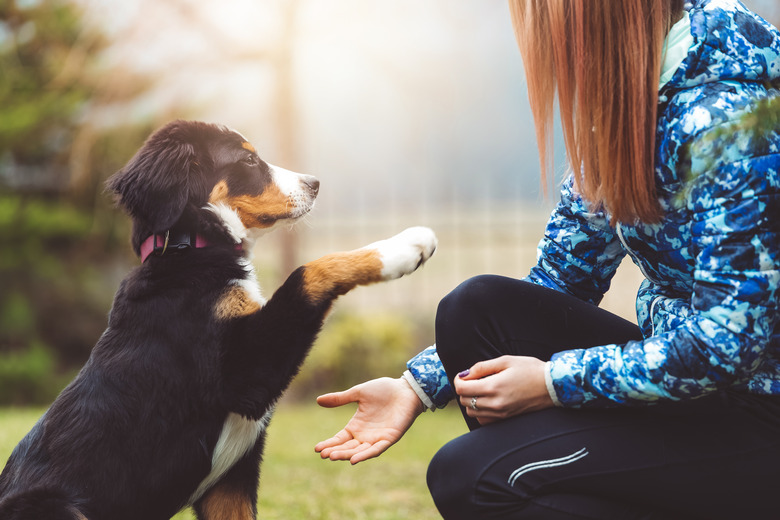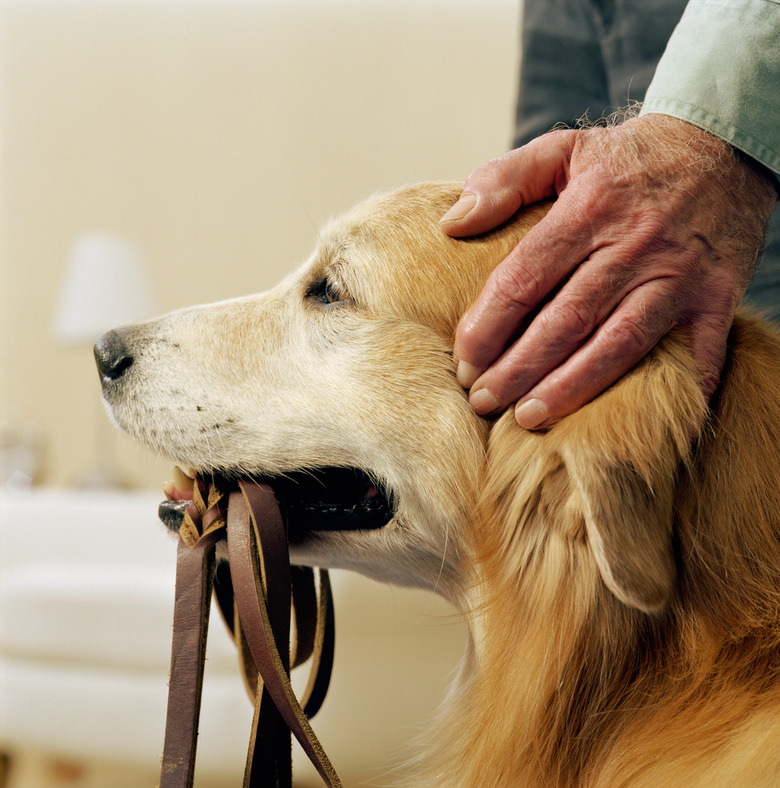6 Dog Behavior Myths, Busted By A Certified Dog Trainer
- 1. You can't teach an old dog new tricks.
- 2. You have to be the "alpha" for your dog to listen.
- 3. Comforting your scared dog "reinforces" fear.
- 4. You can't use positive reinforcement for serious behavior problems.
- 5. Using food in training is bribery.
- 6. My dog should listen to me because they respect me.
For every good piece of dog advice floating around on the internet, I hear about ten bad ones. Dog training and behavior science has updated dramatically in the past few decades, and the cultural ethos around dog ownership hasn't quite caught up yet. Let's go through a few common dog training myths and learn more about what the science says.
1. You can’t teach an old dog new tricks.
1. You can't teach an old dog new tricks.
Despite the popularity of this phrase, we know that it just flat out is not true. Dogs can absolutely learn and benefit from training at any age.
The tricky part tends to be working to undo a prior learning history, especially if a behavior has been rehearsed for a long time. For instance, if your ten-year-old dog has always barked at the mail carrier, it is definitely possible to work on it. But it will likely take a bit of time to unlearn old behaviors and form new habits.
2. You have to be the “alpha” for your dog to listen.
2. You have to be the "alpha" for your dog to listen.
The term "alpha" comes from a study on wolves published in the 1970s, and has since then been redacted by the very researcher who coined it. We now understand that wild wolves live in small family groups consisting of a parent couple and their offspring, rather than a strict and violently reinforced hierarchy. On top of that, the behavior of our domesticated dogs is hugely different from their wild canid cousins. Any training philosophy using "dominance" as a cornerstone is outdated, inaccurate, and unnecessary.
3. Comforting your scared dog “reinforces” fear.
3. Comforting your scared dog "reinforces" fear.
It is, behaviorally speaking, quite literally impossible to reinforce fear. The concept of reinforcement applies to behaviors, not emotions, and especially not involuntary emotions like fear.
When our dogs are fearful, it is absolutely okay (and preferable) for us to provide the comfort they need so they can feel safe and secure. Having a strong foundation of trust is necessary if we eventually want to help our dogs feel less fearful. Applied animal behaviorist Dr. Patricia McConnell offers a helpful analogy on the subject:
"What if someone tried to break into your home in the middle of the night? Let's say they did, and after the intruder left, a friend or loved one sat down with you on the couch, brought you tea and gave you a hug. Would the tea and sympathy make you more likely to be afraid if it happened again the next night? Of course not."
4. You can’t use positive reinforcement for serious behavior problems.
4. You can't use positive reinforcement for serious behavior problems.
There tends to be an assumption that intense behavior issues like aggression require harsher training. However, there is a hefty and growing body of research that demonstrates not only the detriment of using aversive training strategies, but that positive reinforcement is in fact more effective! Hundreds of trainers are using positive reinforcement based training to successfully work through aggression, reactivity, resource guarding, and more all over the world.
5. Using food in training is bribery.
5. Using food in training is bribery.
There's a big difference between a bribe and a reinforcer! A bribe is used to make the behavior happen, while a reinforcer pays for the behavior after it has already happened. If we want our dogs to repeat behaviors we like, we need to reinforce them. Food tends to be the most convenient way to teach new skills, but once your dog understands a cue, you can use other life rewards, like playing with toys, going for a walk, greeting friends, and exploring the environment.
6. My dog should listen to me because they respect me.
6. My dog should listen to me because they respect me.
The concept of "respect" is something just for humans, unfortunately! Dogs are amoral beings. They navigate their world and make decisions based on their learning history. Simply put, dogs just do whatever works for them to get the outcomes they're looking for. This means that we, as the organisms with the thumbs and big brains, need to arrange our homes so that the behaviors we like are the same ones that get the dog what they want.
For example, if your dog loves when guests come over and tends to jump all over them, you can teach them that running over to their mat is the way to get that door open so their friends can come inside.
Dog myths are pervasive, but evidence-based training and compassion are the keys to helping dispel them. If you need help sorting out myths from facts with your dog's behavior, the best course of action is to consult a qualified, evidence-based dog trainer.






